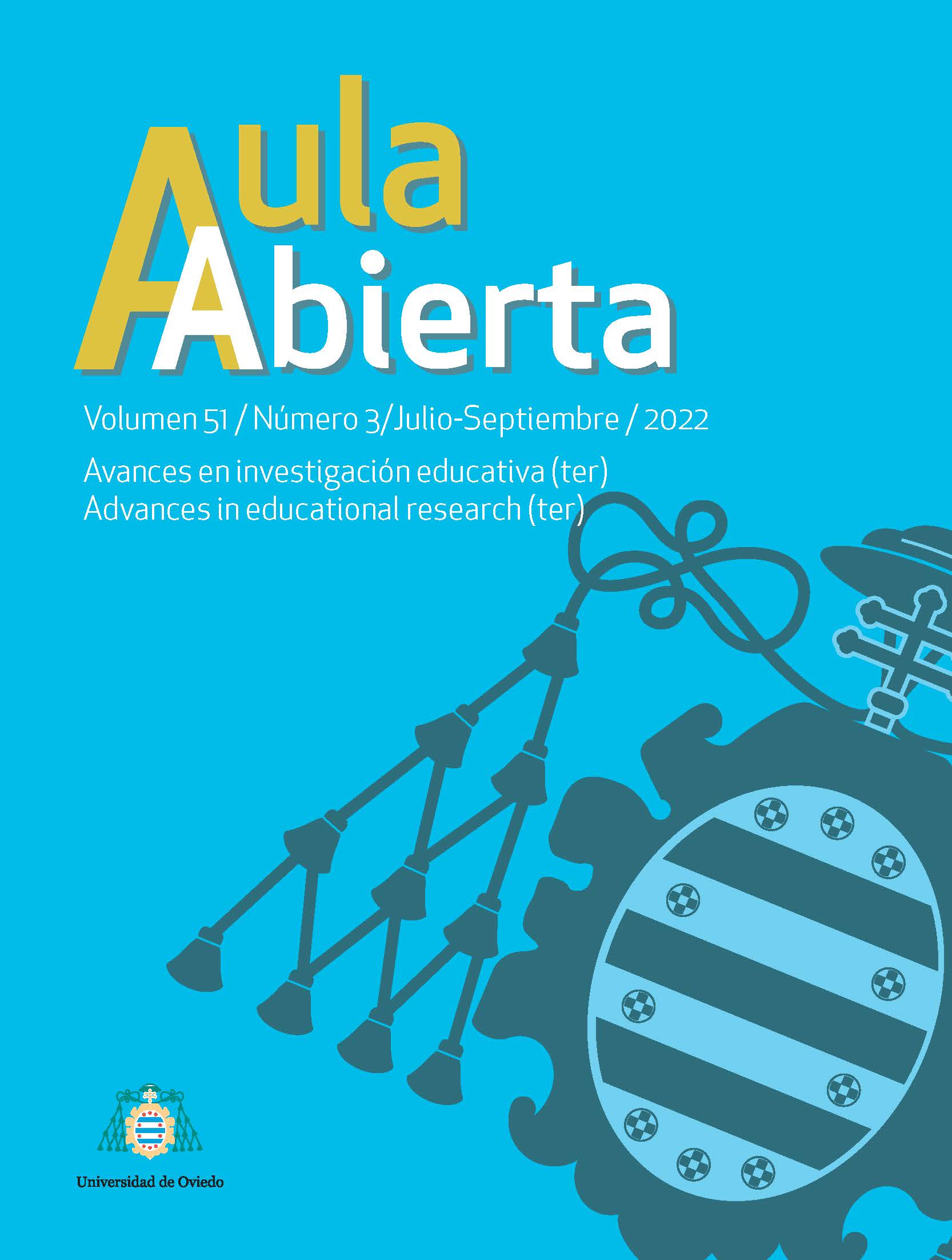Resumen
Las escuelas de segunda oportunidad (E2O) aspiran a convertirse en una respuesta a los desafíos que plantea el retorno educativo y la inserción laboral de jóvenes en situación de riesgo de exclusión. El objetivo de este artículo es analizar la propuesta curricular que realizan las E2O en España. Para ello, en el año 2021 realizamos entrevistas semiestructuradas a la dirección de 24 E2O, a diez profesionales de empresas que han contratado estudiantes egresados de E2O y a nueve tutores y tutoras de centros formativos a los que se han derivado estudiantes a la finalización de su paso por E2O. También se encuestó a 351 jóvenes egresados. Los resultados han revelado que los principales puntos fuertes de las E2O son la flexibilidad curricular en el diseño del itinerario formativo y el protagonismo de los jóvenes en su elección; la relevancia de las competencias transversales y básicas, valoradas por las escuelas en igual medida que las técnico-profesionales; así como el sentido de la evaluación continua, no sancionadora, dirigida a la transformación y a la mejora. Se concluye que el currículum adaptado, flexible e integral de las E2O, contribuye a la inclusión en los ámbitos personal, social, educativo y laboral.
Citas
Álvarez, J. M. (2009). La evaluación en la práctica de aula: Estudio de campo. Revista de Educación, 350, 351-374. http://www.revistaeducacion.educacion.es/re350/re350_15.pdf
Arredondo, R. y Vizcaíno, D. (2020). Fracaso escolar y abandono educativo temprano. Las escuelas de segunda oportunidad como alternativa. Rumbos TS, 23, 63-79. https://doi.org/10.51188/rrts.num23.423
Bernárdez, A. y Belmonte, M. L. (2020). Vulnerabilidad y exclusión educativa, una problemática postergada. Revista Interdisciplinar em Gestão, Educação, Tecnologia e Saúde-GETS, 3(1), 79-94. https://ojs3x.gets.science/index.php/gets/article/view/37
Boylan, R. & Renzulli, L. (2017). Routes and reasons out, paths back: the influence of push and pull reasons for leaving school on students' school reengagement, Youth and Society, 49(1), 46-71, https://doi.org/10.1177/0044118X14522078
Braun, V. & Clarke, V. (2006). Using thematic analysis in psychology. Qualitative Research in Psychology, 3(2), 77-101. https://doi.org/10.1191/1478088706qp063oa
Dearing, R. (1996). Review of Qualifications for 16–19 Year Olds: Summary Report. SCAA. https://eric.ed.gov/?id=ED403388
Delprato, M. & Frola, A. (2022). Zones of educational exclusion of out-of-school youth. International Journal of Educational Development, 88, 102532. https://doi.org/10.1016/j.ijedudev.2021.102532
Demirci, İ. (2020). School engagement and well-being in adolescents: Mediating roles of hope and social competence. Child Indicators Research, 13, 1573-1595. https://doi.org/10.1007/s12187-020-09722-y
Eraut, M. (2004). Informal learning in the workplace. Studies in Continuing Education, 26(2), 247-273. https://doi.org/10.1080/158037042000225245
European Commission. (2013). Preventing early school leaving in Europe: Lessons learned from second chance education. https://op.europa.eu/s/u6MG
European Commission. (2017). Tackling early school leaving. A collection of innovative and inspiring resources. Explore. Learn. Share. https://op.europa.eu/s/u6Op
Fernández, I. y Parrilla, Á. (2021). Apuntes para la lucha contra la exclusión desde la comunidad socio-educativa. Revista Prisma Social, 33, 183-201. https://revistaprismasocial.es/article/view/4261
Gimeno, J. (2000). La educación obligatoria: su sentido educativo y social. Morata.
González, J. C., Luzón, A. y Corchuelo, C. (2019). Initial vocational education and training in a second chance school in Andalusia (Spain): A case study. The Australian Educational Researcher, 46(5), 827-842. https://doi.org/10.1007/s13384-019-00304-8
Lőrinc, M., Ryan, L., D’Angelo, A. & Kaye, N. (2020). De-individualising the ‘NEET problem’: An ecological systems analysis. European Educational Research Journal, 19(5), 412-427. https://doi.org/10.1177/1474904119880402
Macedo E., Santos S. A. & Araújo H. C. (2018). How can a second chance school support young adults’ transition back to education? European Journal of Education, 53, 452-455. https://doi.org/10.1111/ejed.12312
Meo, A. & Tarabini, A. (2020). Teachers’ identities in second chance schools: A comparative analysis of Buenos Aires and Barcelona. Teaching and Teacher Education, 88(2), 102963 https://doi.org/10.1016/j.tate.2019.102963
Merino, R. (2019). Los componentes no formales de los itinerarios formativos de los jóvenes: ¿refuerzan o compensan las desigualdades sociales en educación? Revista de Estudios de Juventud, 124, 209-226. http://www.injuve.es/sites/default/files/adjuntos/2021/03/injuve_124_web_pdfa.pdf
Mills, M., Te Riele, K., McGregor, G. & Baroutsis, A. (2017). Teaching in alternative and flexible education setting, Teaching Education, 28(1), 8-11. https://doi.org/10.1080/10476210.2016.1263613
Novak, A. (2018). The association between experiences of exclusionary discipline and justice system contact: A systematic review. Aggression and Violent Behavior, 40, 73-82. https://doi.org/10.1016/j.avb.2018.04.002
OECD. (2015). OECD skills outlook 2015: Youth skills and employability. OCDE.
Olmos, P. y Mas, O. (2017). Perspectiva de tutores y de empresas sobre el desarrollo de las competencias básicas de empleabilidad en el marco de los programas de formación profesional básica. Educar, 53, 261-284. https://doi.org/10.5565/rev/educar.870
Prieto, B. (2015). El camino desde la vulnerabilidad escolar hacia el desenganche educativo. El papel de las escuelas de segunda oportunidad en la estrategia contra el abandono educativo. Profesorado. Revista de Currículum y Formación de Profesorado, 19(3), 110-125. https://www.redalyc.org/articulo.oa?id=56743410008
Ripamonti, E. (2018). Risk factors for dropping out of high school: A review of contemporary, international empirical research. Adolescent Research Review, 3(3), 321-338. https://doi.org/10.1007/s40894-017-0075-y
Romero, E. y Hernández, M. (2019). Análisis de las causas endógenas y exógenas del abandono escolar temprano: una investigación cualitativa. Educación XX1, 22(1), 263-293. https://doi.org/10.5944/educxx1.21351
Ross, S. & Gray, J. (2005). Transitions and re-engagement through second chance education. The Australian Educational Researcher, 32(3), 103-140. https://doi.org/10.1007/BF03216829
Salvà, F., Nadal, J. y Melià, M. (2016). Itinerarios de éxito y rupturas en la educaciòn de segunda oportunidad. Revista Latinoamericana de Ciencias Sociales, 14(2), 1405-1419. https://doi.org/10.11600/1692715x.14235251115
Villardón, L., Flores, L., Yáñez, L. y García, R. (2017). Desarrollo de competencias socio-profesionales en contextos vulnerables El caso de Peñascal Kooperatiba. Revista Iberoamericana de Educación, 74, 147-170. http://hdl.handle.net/11162/174746
Villardón, L., Flores, L., Yáñez, L. & García, R. (2020). Best Practices in the Development of Transversal Competences among Youths in Vulnerable Situations. Education Sciences, 10(9), 230. https://doi.org/10.3390/educsci10090230
Wells, K. (1995). The strategy of Grounded theory: Possibilities and problems. Social Work Research 19(1), 33-37. https://www.jstor.org/stable/42659916

Esta obra está bajo una licencia internacional Creative Commons Atribución-NoComercial-SinDerivadas 4.0.
Derechos de autor 2022 Aula Abierta






